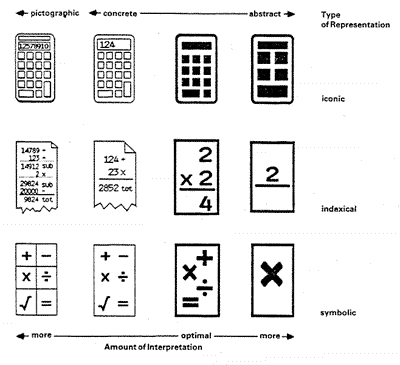Semiotics and Human-Computer Interaction (since 1980)
Computers are semiotic machines. Signs are what a computer processes as electrons pass through the various components of the machine. When a program is utilized, signs are subjected to the commands in the program. In other words, representations (of logical operations, data, algorithmic descriptions, etc.) are subjected to processing. The logical consequence is that the […]
Computers are semiotic machines. Signs are what a computer processes as electrons pass through the various components of the machine. When a program is utilized, signs are subjected to the commands in the program. In other words, representations (of logical operations, data, algorithmic descriptions, etc.) are subjected to processing. The logical consequence is that the interaction between the computer and the users (programmers, researchers, artists, designers, etc.) is based on sign processes.
Since the time when Nadin introduced semiotics as the foundation for creating interfaces, important steps have been made in enhancing expressiveness, user-friendliness, and the effectiveness of applications for scientific and non-scientific purposes.
The first known application of semiotics to interface design (early 1980) by Nadin resulted in classes, tutorials, and many articles on the subject. Nadin’s work in applied semiotics have made him a leading expert in HCI.


Posted in Semiotics

 Disrupt Science: The Future Matters
Disrupt Science: The Future Matters